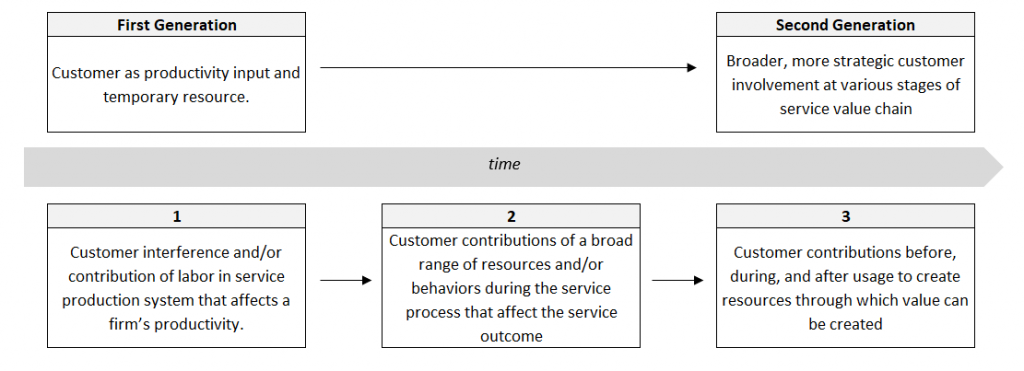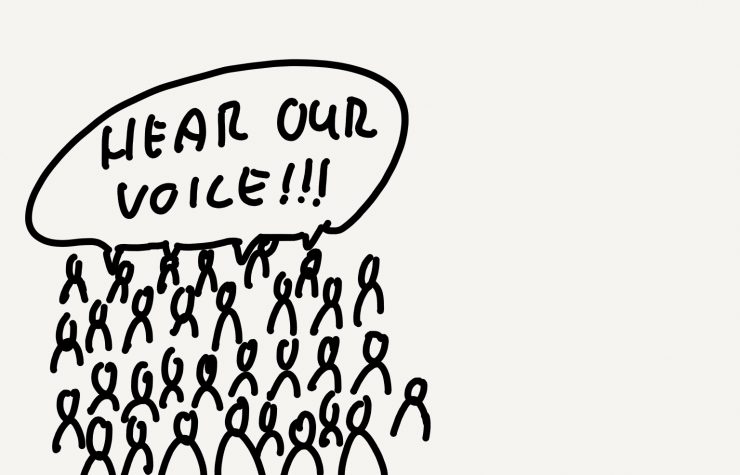So services require co-creation from the side of customers. Isn’t that a little vague?What does that really mean? Yes, it is vague, so glad you asked! “Customer co-creation”, until recently, lacked conceptual clarity (and was used synonymously with customer involvement, customer participation, co-design, etc.) . What helped me pin down the meaning were 3 separate things.
First, two recent research efforts have reviewed decades of articles, and defined the below evolution, or rather, extension of what co-creation means.

A blunt summary: “customer co-creation” went from you as a customer building your IKEA furniture instead of IKEA employees, to you directly influencing strategic decisions of a company. Here’s also a definition (from Oertzen): “The co-creation of services denotes collaborative activities in the customer-provider interface associated with the service; it necessitates the involvement, engagement and participation of at least one customer and one service provider and may lead to beneficial and/or counterproductive outcomes through resource integration.”
Second, services are complex processes, not just a single action in a single point in time. And co-creation overarches the entire service process. Accordingly, it consists of multiple sub-categories, depending on which stage of the process the co-creation is taking place in. I took a process view, again from Oertzen, depicting stages. I will focus on the initial two stages, “co-ideation and co-valuation, as these are the initiation and validation stages – and as such they correspond best with the Swiss direct democracy practices of initiatives and referendums.

And the third thing that helped me define co-creation…? I’m just going to act like a Netflix series, and leave that as a cliffhanger for a later blog post…
From “partial employees” who simply mean cost savings or “interference”, customers are becoming more demanding, informed, connected and involved. It is easy to see how this parallels direct democracy’s increasingly informed, demanding and empowered citizens. So it seems my effort in drawing a parallel between these makes sense…
(If you want to jump ahead, see here how I update the above illustration following my literature review.)





















[…] and even really immersive. In my opinion this ‘depth’ view should be combined with the phases view. That would allow senior executives to position the areas of co-creation they want to focus on […]
[…] […]